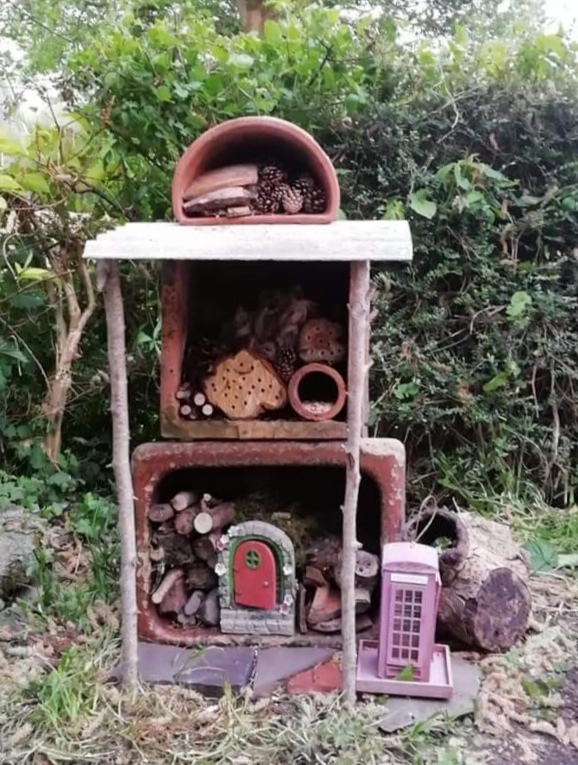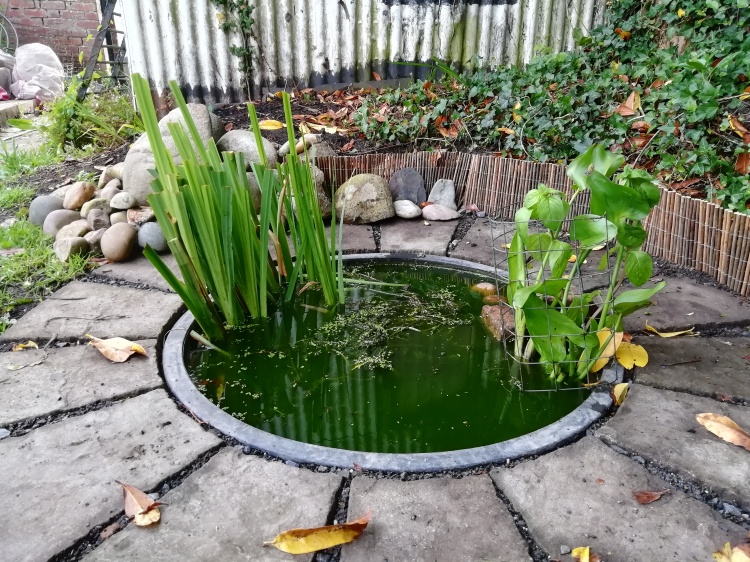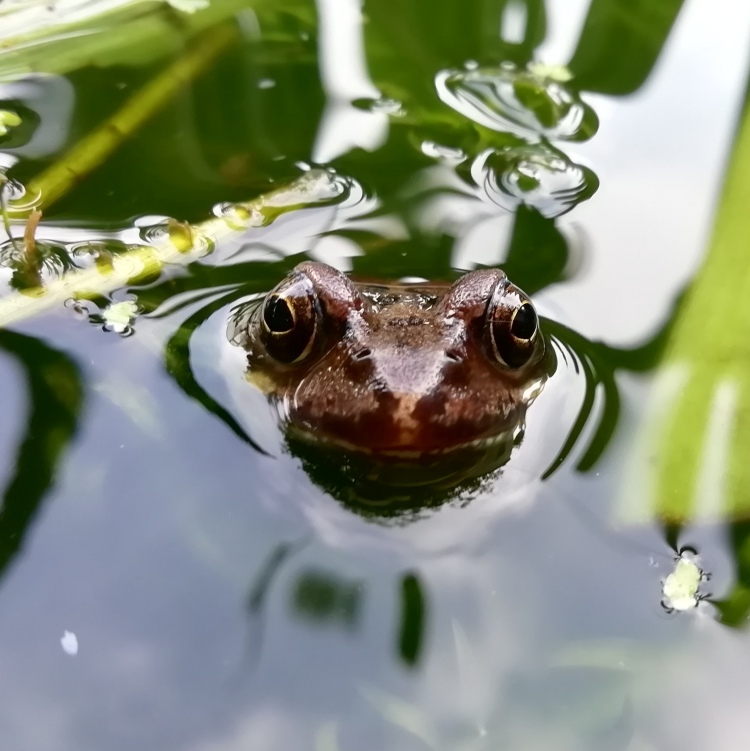Shakespeare wrote: “One touch of nature makes the whole world kin”. He was probably describing people coming together through shared experiences and emotions, but I like to consider this quote using another use of the word “nature”. The pandemic situation we find ourselves in is global, and it has also united us around the world in our love of nature and the outdoors. I have found many kindred spirits in the Facebook group I created, Carmarthenshire Birds and Wildlife. People are enjoying their gardens more than ever – so much so there is a shortage of compost at garden centres around the county! We are noticing more wildlife and also destroying less with our cars.
The beauty of wildlife gardening is you don’t need much space, lots of specialist equipment, or expert knowledge. The internet is full of advice and tips and most of the wildlife trusts have downloads and pages dedicated to making the outside areas of our homes more welcoming to wildlife
Our garden has some extremely overgrown areas that we’ve left fairly wild, so that our resident hedgehog has somewhere to snuffle and look for worms. We have a hedge boundary so it can come and go as it likes, and live its best hedgehoggy life all around the village – even turning up on a neighbours decking during a late night barbecue!
Our garden has evolved with our family. A pond wasn’t a priority when our son was small but he once he outgrew his sandpit we put it to good use as a pond. . We’ve added some stones to enable anything that ventures in to get out safely and a kindly neighbour has given us some native plants from their established pond. Hopefully the oxygenating effect will clear some of the algae and enable us to get even better views of the frog and newts that call it home. Our first two newts were a ‘gift’ from a neighbour who had found them and asked if they could be homed in our garden, they’ve been here for seven or eight years. Newts enjoy ponds for part of the year and use them for breeding; they need dry land too – logs, stones, wooded areas – anywhere safe to hibernate for the winter.
Last year in the spring we found some frogspawn in a puddle in the middle of Brechfa forest, nowhere near a pond or stream. I scooped it up in my travel mug and brought it home, where it lived in an old fish tank while we studies it, before being added to the murky pond, which at that time had no plants but hopefully offered a better chance at life than a puddle – and if all else failed, the newts would be fed!
Wildlife rarely needs to be brought into your garden, if you make your garden attractive to wildlife, it will usually find its own way. We have the mammals and amphibians I’ve just described, along with the occasional reptile and plenty of bird species to delight me in the early morning with their chorus. We’ve kept an area of nettles next to our compost bin and we have a buddleia that is about to bloom. Plenty of butterflies are already checking it out in anticipation! Butterflies have been a lifelong interest and passion of mine and I’m always a little disappointed by the contradictory values many gardeners have. Some seem to love a butterfly but hate a caterpillar. Hopefully this year’s caterpillars will enjoy the nettles and wild plants and leave our veggies alone. It can always be fun to have a caterpillar collecting competition with your family and throw them over the hedge to your neighbour when you’ve finished! No, I’m joking. Definitely don’t do that, put them in your wildlife area so they can grow and become butterflies or be fed to birds who will have plenty of young to feed.
An average garden accommodates more than 2,000 species of insect. Most of them benefit our gardens by eating the other insects that can damage plants, and acting as food for other animals. And of course, they are essential for pollination. We’ve built our garden’s insects a new bug hotel that we’ve named ‘The Biolblitz Ritz’











